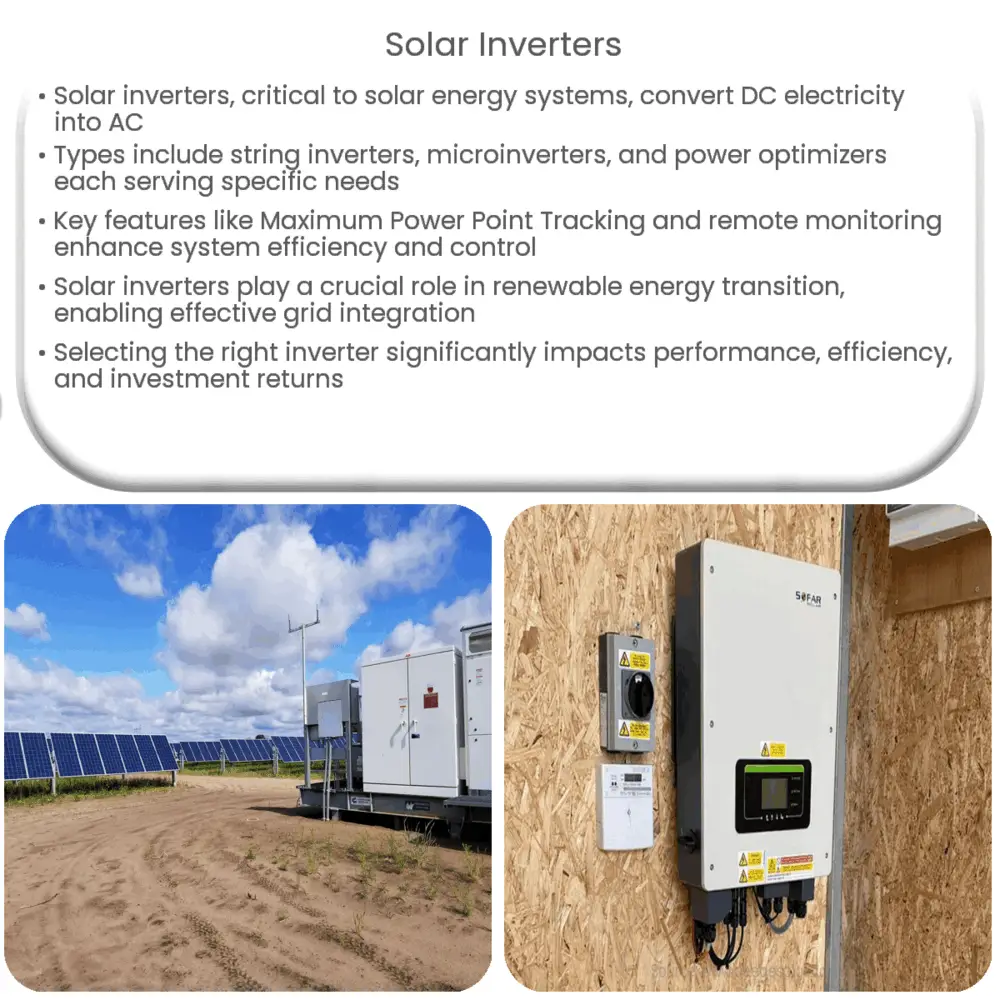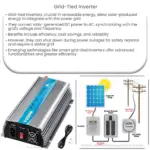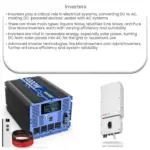Solar inverters convert DC power from solar panels into usable AC electricity, optimizing efficiency and enabling integration with the grid.

Solar Inverters: Harnessing the Power of the Sun
Introduction
The growth of solar energy has been meteoric in recent years, providing a sustainable and clean source of power for millions of people worldwide. A critical component of any solar energy system is the solar inverter. This device converts the direct current (DC) electricity generated by solar panels into alternating current (AC), which can be used to power homes, businesses, and the grid. In this article, we will explore the types, features, and advantages of solar inverters, as well as discuss their role in the global transition to renewable energy.
Types of Solar Inverters
There are several types of solar inverters available on the market, each designed to cater to specific requirements and preferences. The three most common types are:
- String Inverters: Also known as central inverters, these are the most widely used type of solar inverter. They connect multiple solar panels in a series, called a “string,” and convert the DC electricity from the entire string into AC. String inverters are typically cost-effective and easy to install, making them a popular choice for residential and small-scale commercial installations.
- Microinverters: Unlike string inverters, microinverters are installed directly on each solar panel. This means that each panel has its own inverter, allowing for individual optimization and monitoring. Microinverters offer increased efficiency and are more adaptable to shading or panel failure, but they tend to be more expensive due to the higher number of components required.
- Power Optimizers: Also known as DC optimizers, these devices are a hybrid between string inverters and microinverters. Power optimizers are installed on each solar panel, but instead of converting DC to AC, they optimize the DC voltage before sending it to a centralized inverter. This approach combines the benefits of both string inverters and microinverters, resulting in increased efficiency and better system performance.
Key Features and Advantages
Solar inverters come with various features that enhance their performance, efficiency, and ease of use. Some of the key features and advantages include:
- Maximum Power Point Tracking (MPPT): MPPT technology enables solar inverters to optimize the voltage and current at which solar panels operate, ensuring that the system produces the maximum possible power. This feature is essential for improving overall system efficiency and performance.
- Remote Monitoring and Control: Modern inverters often come with built-in communication capabilities, allowing users to monitor and control their solar energy system remotely. This can be done via a smartphone app or a web-based platform, providing real-time insights into system performance and allowing for quick identification of issues.
- Grid Support Functions: Advanced solar inverters can provide grid support functions, such as voltage and frequency regulation, reactive power control, and load management. These capabilities help maintain grid stability and can enable higher levels of solar penetration on the grid.
Importance of Solar Inverters in Renewable Energy Transition
As the world shifts towards renewable energy sources to combat climate change and reduce dependence on fossil fuels, solar inverters play a crucial role in this transition. They enable efficient and reliable integration of solar energy into the grid, contributing to the overall stability and resilience of the electricity system. In addition, their advanced features, such as remote monitoring and grid support functions, facilitate the management and operation of distributed solar generation, allowing for increased solar adoption in residential, commercial, and utility-scale applications.
Choosing the Right Solar Inverter
Selecting the appropriate solar inverter for your specific needs can significantly impact your solar energy system’s performance, efficiency, and return on investment. Here are some factors to consider when choosing a solar inverter:
- Compatibility: Ensure that the chosen inverter is compatible with your solar panels, system size, and electrical requirements.
- Efficiency: Inverters with higher efficiency ratings convert a larger percentage of the generated DC electricity into usable AC power, increasing the overall effectiveness of your solar energy system.
- Reliability and Warranty: Choose an inverter from a reputable manufacturer with a proven track record of reliability and performance. Additionally, consider the warranty period and terms, as they can provide added peace of mind and protection for your investment.
- Price: While it is essential to consider the initial cost of the solar inverter, it is also crucial to weigh its long-term performance, efficiency, and durability against the upfront expense. Opt for a solar inverter that offers the best value for money without compromising on quality and features.
Conclusion
Solar inverters are an indispensable component of any solar energy system, ensuring that the electricity generated by solar panels can be efficiently and safely used to power our daily lives. With various types, features, and advantages, it is crucial to select the right solar inverter for your specific needs and requirements. As solar energy continues to gain traction globally, the role of solar inverters in facilitating this transition to a more sustainable and cleaner energy future cannot be overstated.




